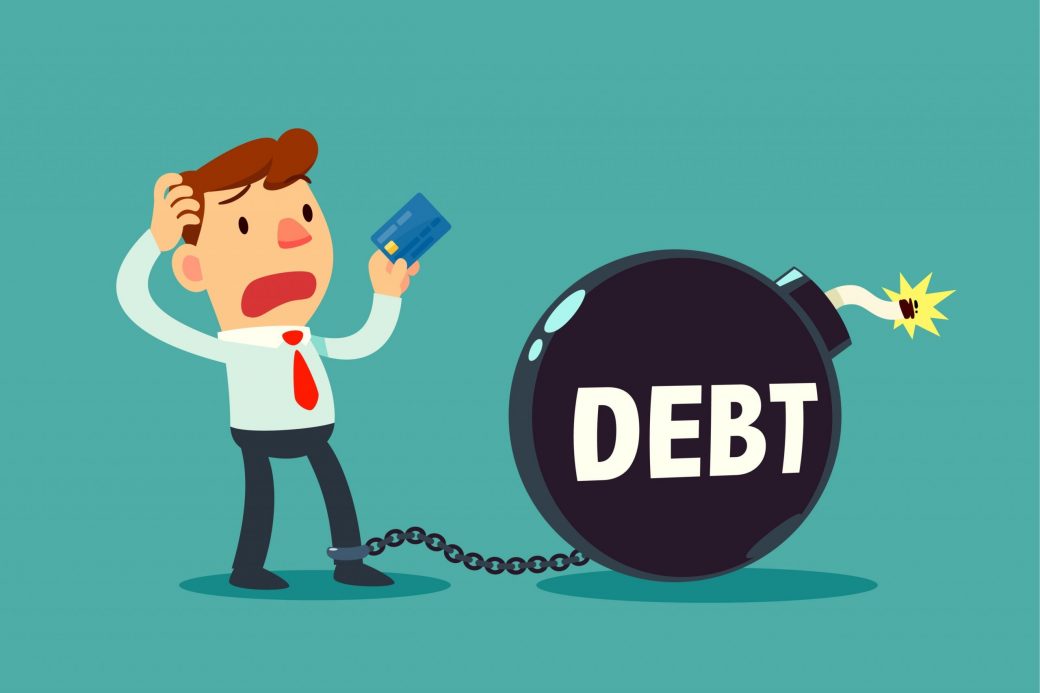Declaring bankruptcy is one of the most intense and personal financial decisions anyone can make.
On those rare occasions, bankruptcy is spoken of, it’s usually done slyly, which oftentimes furthers consumer fears for both the process of declaring and any consequences that may occur as a result.
But the bottom line is this: For those struggling with oppressive debt, bankruptcy sometimes feels like the only option. Especially if you’re forced to choose between paying your bills and survival.
Facing bankruptcy can be frightening, but it doesn’t have to be.
Keep reading to learn a bit about the kinds of bankruptcies available to individual American consumers, the consequences of bankruptcy on credit scores, and how to rebuild credit after bankruptcy.
What Happens When You File for Bankruptcy?
There are two common types of bankruptcies for American consumers: Chapter 7 and Chapter 13 bankruptcies.
Why does this matter?
Before you can declare bankruptcy, you need to determine which type of bankruptcy is right for you.
In a Chapter 7 bankruptcy, your assets (typically all things other than one car and your home) are sold. Money from the sale of your assets is used to pay off your debt. Any balance owed to creditors (people you owe money to) is eliminated unless you have a co-signer. If you had a co-signer, they will be asked to cover any remaining debt. This kind of bankruptcy stays on a credit report for about 10 years.
In a Chapter 13 bankruptcy, you work with an accredited agency to pay back your creditors as much as possible through a structured repayment plan. Typically these types of repayment plans last for about three to five years. Any remaining debt left over after that time period, including credit card debt, is waived. With a Chapter 13 bankruptcy, co-signers are protected. However, expect that Chapter 13 bankruptcy to appear on your credit report for about 10 years.
What’s the real story?
In both forms of bankruptcies, consumers may see such consequences as:
- A considerable increase in automobile insurance rates.
- Increased difficulty in renting apartments, and in some extreme cases, obtaining employment.
- Credit scores plummet up to 200 points. However, for consumers heading into bankruptcy with already low ratings, your credit score tier might not change drastically.
Who Benefits from Bankruptcy?
So why would a credit-conscious consumer choose one form of bankruptcy over the other? After all, they both discharge credit card debt, stay on a credit report for about the same length of time, have a similar impact on credit scores, and can have similar consequences in all areas of life.
Here’s the deal:
The “fresh start” offered by Chapter 7 sounds appealing, particularly for those who can’t afford a repayment plan. However, it may make future creditors and lenders apprehensive about granting loans to you in the future. This can hinder personal goals that require a clean credit report, such as obtaining loans for mortgages, cars or businesses.
While having one’s wages garnished or a lien on one’s home sounds stressful, fulfilling the requirements of a Chapter 13 bankruptcy can ease feelings of failure and may result in a vastly improved credit score once the bankruptcy process is over.
I can’t emphasize this enough: In the end, the type of bankruptcy that works best for you depends on everything from your income to your own personal feelings. Consult with a professional before beginning either bankruptcy process is always the best first step.
Credit Repair, Post-Bankruptcy
For all its consequences and emotional stress, the good news with declaring bankruptcy is that the negative impact on one’s credit score diminishes over time.
Smart tip: Consumers who enter bankruptcy should check their credit early and often in the bankruptcy process to ensure the bankruptcy is accurately reported to all major credit agencies and that progress is tracked consistently.
That’s not all…
If you declare bankruptcy, consider the following tips to get your personal finances back on track:
- Rebuild ASAP
While time can restore credit scores for many consumers, be prepared to work to rebuild your credit immediately.
It’s true that bankruptcy will fall off your credit report in seven to 10 years. However, if none of your discharged accounts are more than 10 years old, you’ll effectively need to rebuild your credit from the ground up.
- Look Gift Horses in the Mouth
Oddly, consumers in bankruptcy often find themselves inundated with credit card offers. It seems counterintuitive, but the truth is that banks are well aware that consumers cannot file for bankruptcy again for several years, which mitigates some of their risks.
For those who don’t get targeted by such credit offers, consider a secured card or a store-branded credit card.
While being extended credit lines may seem like mercy in the financially trying time of bankruptcy, it pays to read all the fine print, as these offers tend to come with extremely high fees, high minimum payments and/or outrageous interest rates. In any case, rebuilding credit during bankruptcy or soon after will require responsibility and diligence.
Bottom Line:
Bankruptcy will negatively impact your credit score significantly, but it doesn’t have to be the end of your credit goals.
Call a nonprofit credit counseling agency like DebtWave to help you improve your financial habits. In no time you’ll find you and your credit score are back on track.
Are you considering bankruptcy, or have you come back from one? Let us know in the comments!


